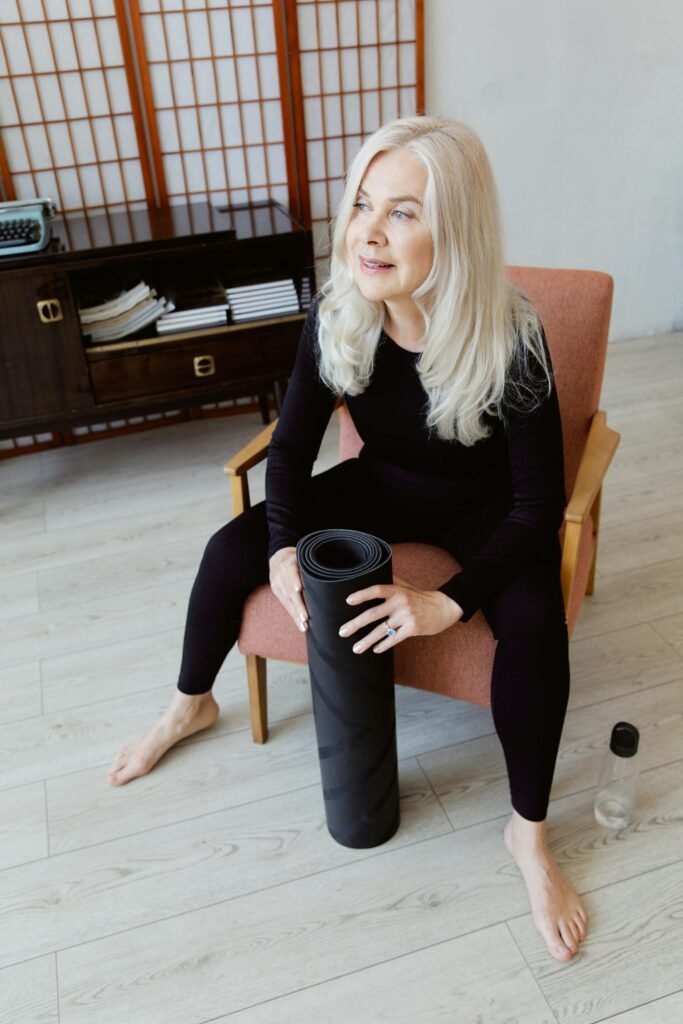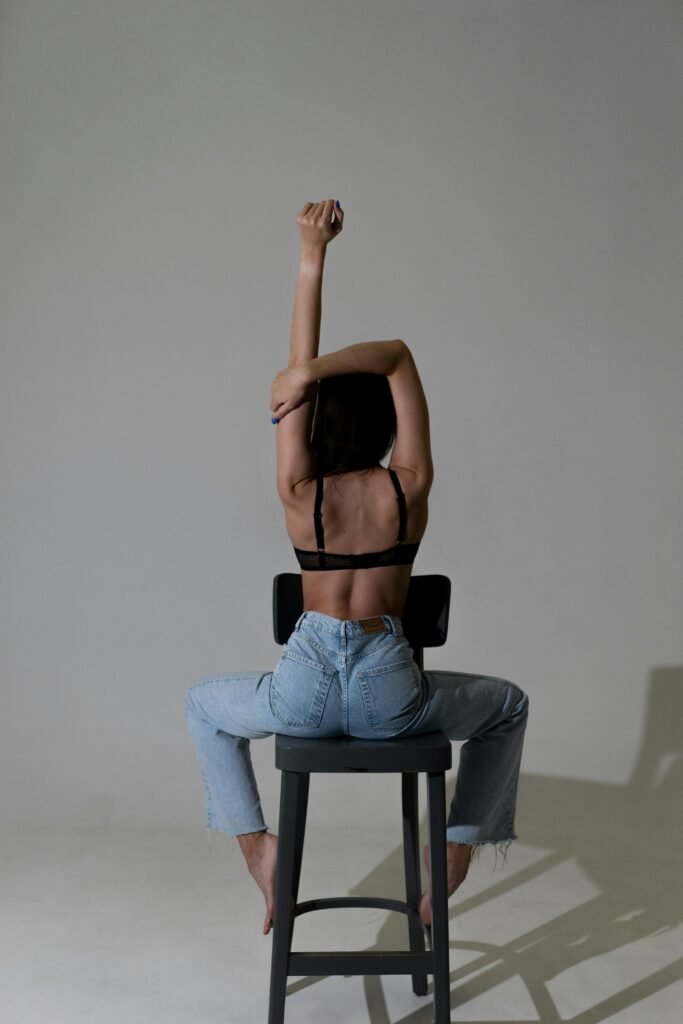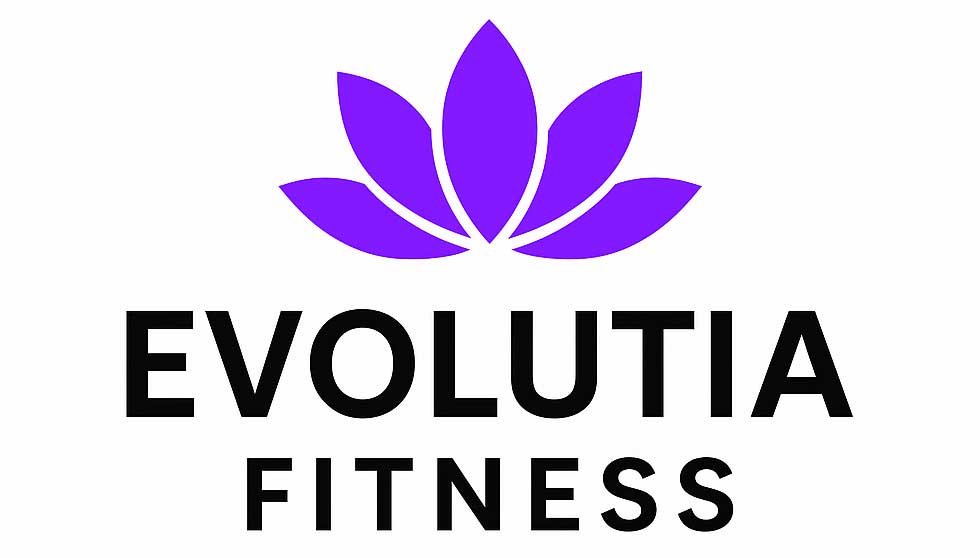Chronic knee pain can dim the joy of daily activities for seniors, but a gentle chair yoga sequence offers a safe, accessible path to relief. This Chair Yoga Sequence for Chronic Knee Pain Relief in Seniors empowers older adults to ease joint discomfort and improve mobility through a 15-minute routine designed for those with arthritis, injury, or age-related stiffness. Crafted for EvolutiaFitness.com’s community, this chair yoga sequence is ideal for seniors, caregivers, and wellness educators seeking natural pain relief, addressing a condition affecting over 37% of adults over 65. Inspired by your passion for innovative wellness projects (e.g., Yoga for Sciatica During Pregnancy), this guide blends accessibility, science, and community engagement to support vibrant aging.
Why Chair Yoga is Perfect for Seniors
This article creates a gentle, chair-based yoga sequence to relieve chronic knee pain in seniors, using simple movements to enhance joint mobility and reduce discomfort. It’s beginner-friendly, research-backed, and perfect for seniors – especially those with knee pain or chronic knee pain.
What You’ll Learn:
- How to perform a 15-minute chair yoga sequence for knee pain relief.
- Safe techniques to improve mobility and reduce joint stress in seniors.
- Ways to share your journey and inspire others in wellness communities.

Why Choose Chair Yoga for for Seniors with Knee Pain?
Chronic knee pain, often due to osteoarthritis or past injuries, affects over 37% of seniors, limiting mobility and quality of life. Chair yoga offers a low-impact solution, improving joint flexibility, strengthening supporting muscles, and reducing pain by up to 25% with regular practice (Moonaz et al., 2015). Unlike standing yoga or high-intensity exercise, chair yoga ensures safety for seniors with limited mobility or balance concerns, making it accessible for those with canes or wheelchairs. By sharing pain relief stories on r/seniors or wellness forums, users can advocate for active aging.
Fun fact: Chair yoga can boost knee joint lubrication, reducing stiffness and pain in just 8 weeks (Moonaz et al., 2015)!
Costs & Items Needed
- Sturdy Chair: Armless, stable chair with a flat seat (e.g., dining chair).
- Yoga Strap (optional): 6–8 feet long (~$5–10) for assisted stretches.
- Cushion or Blanket: For seat comfort or knee support.
- Non-Slip Mat: Optional, placed under the chair for stability.
- Optional: Small ball (e.g., tennis ball) for foot exercises, journal for tracking progress, water bottle for hydration.
Cost: Free OR ~$10–25, depending on sourced materials (e.g., household chair, blanket).
Time: 30 minutes to set up, plus 15 minutes per yoga session.
Step-by-Step Instructions
- Set Up Your Space
- Choose a quiet, well-lit area with a flat surface; place a sturdy, armless chair on a non-slip mat or floor to prevent sliding.
- Add a cushion or folded blanket to the seat for comfort; keep a yoga strap and water bottle within reach.
- Consult a healthcare provider before starting, especially if you have severe arthritis or recent knee surgery (Moonaz et al., 2015).
- Prepare the Sequence
- Create a 15-minute sequence with 5 chair-based poses: Seated Leg Lifts, Ankle Circles, Chair Warrior II, Seated Hamstring Stretch, and Knee-to-Chest. Each pose strengthens knee-supporting muscles and improves joint mobility.
- Practice diaphragmatic breathing (4-second inhale, 6-second exhale) to enhance relaxation and pain relief (Villemure et al., 2015).
- Ensure the chair is stable and your feet can touch the floor comfortably (adjust with a blanket if needed).
- Perform the Poses
- Seated Leg Lifts (3 minutes): Sit upright, holding chair edges; extend one leg forward, flex the foot, and lift 6 inches. Hold for 10 seconds, lower slowly. Repeat 5 times per leg to strengthen quadriceps, easing knee stress (Moonaz et al., 2015).
- Ankle Circles (2 minutes): Sit with feet flat; lift one foot slightly and rotate the ankle clockwise, then counterclockwise, for 30 seconds each. Repeat on the other side to improve joint mobility and circulation.
- Chair Warrior II (3 minutes): Sit sideways, one leg bent at 90 degrees, the other extended back, foot flat. Extend arms parallel to the floor. Hold for 1 minute per side to stretch hips and stabilize knees (Park et al., 2017).
- Seated Hamstring Stretch (3 minutes): Sit forward, extend one leg with the heel on the floor, and loop a strap around the foot. Gently pull to stretch the hamstring. Hold for 1.5 minutes per side to relieve knee tension.
- Knee-to-Chest (4 minutes): Sit upright, hug one knee toward your chest, keeping the other foot flat. Hold for 2 minutes per side to release lower back and knee pressure (Villemure et al., 2015).
- Monitor and Adjust
- Practice the sequence 4–6 times weekly, ideally in the morning to reduce stiffness; stop if you feel sharp pain or swelling.
- Track pain levels in a journal (e.g., 1–10 scale) to note progress; expect a 15–25% pain reduction after 4–8 weeks (Moonaz et al., 2015).
- Modify poses with extra support (e.g., blanket under knees) if arthritis flares occur or mobility is limited (Park et al., 2017).
- Share and Maintain
- Wipe the chair and props monthly with mild soap to keep clean; store straps and blankets in a dry, shaded area.
- Share your pain relief journey and tips for others on r/seniors or senior wellness forums with #SeniorChairYoga to inspire others and promote active aging.

Tips for Success
- Prioritize Comfort: Use a cushion or blanket to support knees or hips, ensuring no strain on joints.
- Move Slowly: Perform poses gently to protect arthritic knees; avoid locking joints during extensions (Park et al., 2017).
- Incorporate Mindfulness: Pair poses with guided visualization (e.g., imagine warmth in knees) to reduce pain perception by 10%.
- Work with Professionals: Consult a physical therapist or yoga instructor for personalized modifications, especially post-surgery.
Benefits of Chair Yoga for Knee Pain in Seniors
- Pain Reduction: Decreases knee pain by 15–25% with regular practice, per clinical studies (Moonaz et al., 2015).
- Enhanced Mobility: Improves knee flexibility and strength by 20%, aiding daily tasks like walking (Park et al., 2017).
- Safe for Seniors: Chair-based poses minimize fall risk, unlike standing yoga, ideal for limited mobility (Moonaz et al., 2015).
- Stress Relief: Lowers cortisol levels, reducing pain perception by 10%, vital for senior wellness (Villemure et al., 2015).
Fun fact: Chair yoga strengthens the muscles around the knee, acting like a natural brace for arthritis (Park et al., 2017)!
Variations and Upgrades
- Bedside Sequence: Adapt poses for a bed (e.g., lying leg lifts) for seniors with severe mobility issues.
- Group Class Format: Design a sequence for senior center classes, adding social interaction to enhance mental health.
- Digital Monitoring: Use a fitness app (e.g., FitOn) to track sessions and share progress with caregivers.
- Foot Massage Add-On: Incorporate a tennis ball roll under the foot to complement knee relief, improving circulation.
- Virtual Workshop: Host a Zoom chair yoga session for seniors, promoting #SeniorChairYoga on social media.
FAQs About Chair Yoga for Seniors
- Why practice chair yoga for knee pain?
It reduces pain by 15–25% and improves mobility safely for seniors (Moonaz et al., 2015). - Is it safe for seniors with arthritis?
Yes, with gentle movements and healthcare provider approval, minimizing joint stress. - Is this a free chair yoga sequence?
It can absolutely be free. Some optional add-ons like yoga straps or a cushion may cost money if you don’t already have them – but this chair yoga routine can easily be performed without them. - What equipment is needed?
A sturdy chair, and optional cushion and yoga strap for comfort and stability. - How often should I practice?
4–6 times weekly, 15 minutes per session, for optimal relief (Moonaz et al., 2015). - Can it help with balance issues?
Yes, chair support reduces fall risk, ideal for limited mobility (Park et al., 2017). - Can I share my progress online?
Absolutely—post on r/seniors or on social media with #SeniorChairYoga to inspire others.
